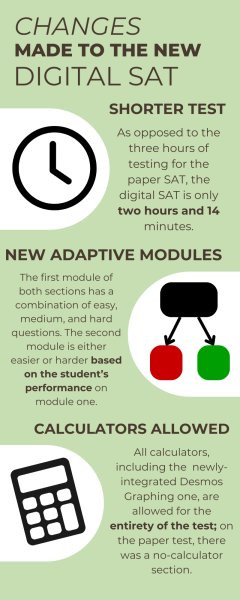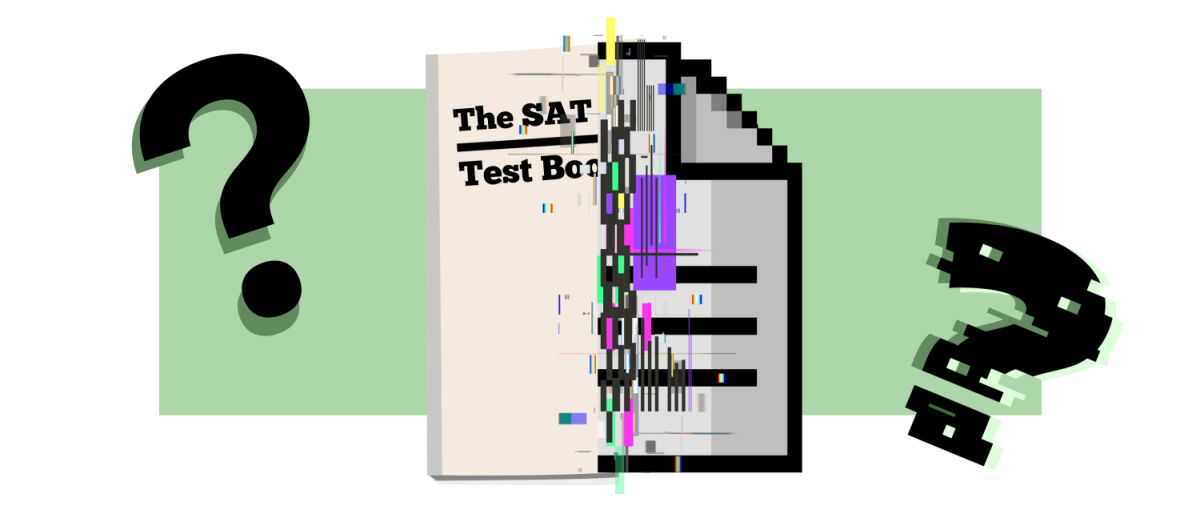As of spring 2024, the SAT will have become fully digital across the US, along with a new adaptive format meant to improve the testing experience.
The SAT isn’t just moving to computer screens: the way it’s taken and proctored is completely changing. In an update to their website, the College Board gave information on how the SAT would be changing, and how it would be staying the same.
According to the College Board, the SAT will still follow the same 1600 point scale, be taken in schools and standard testing centers, and “remain an accurate measurement of knowledge and skill for colleges and careers.”
“[We] didn’t just take the paper and pencil test and put it on the computer,” College Board said on their site. “We took the opportunity to make the SAT a far better test experience for you.”
In order to test the validity of this new method, Assistant Principal Krista Keogh had the opportunity to attend a workshop for the College Board in November, where research was done comparing students who had taken the paper SAT and the new SAT.

“College Board has done a lot of studies over the last couple of years,” Keogh said. “We have all different kinds of kids taking the paper and pencil, and then we’re giving them the digital SAT and their scores are correlated very strongly.”
Opinions among students who have taken this new format of the SAT are mixed. Junior Benji Simberg, finds that the reading section of the new version is much more manageable than the older version.
“The biggest pro would be in the English section,” Simberg said. “Since the passages are much shorter, you don’t have to read these huge long passages which makes it much easier for the evidence based questions.”
Junior Ryan Gopalani recognizes the benefit of the test now being shorter since he can stay focused for longer while taking the SAT. “Timing is huge, because you burn out less quickly and your energy drains at a slower rate on the digital SAT,” Gopalani said. “You’re more awake for those harder questions that come at the end.”
Gopalani finds that the math section of the SAT becomes more inconvenient on a computer, rather than the standard paper and pencil. “You can’t annotate directly on the page,” Gopalani said. So for the math section, that was a little bit of a burden having to transfer content from screen to page.”
Social Studies teacher David Knoeckel, who proctored for the digital SAT, found the process was much easier than the old SAT.
“It was self paced for the kids and [the computer] did the timer for them as far as their break,” Knoeckel said. “Once they got going, it was incredibly easy to proctor. The only thing I had to do was walk around to make sure they weren’t cheating.”
For Biology teacher Alexandra Bak, taking the SAT on computers made proctoring more inconvenient. “With everybody starting at slightly different times, the breaks didn’t line up,” Bak said. “Some kids would be on break while other kids around them were testing.”
Despite differing opinions among students and staff regarding the new SAT, they still recognize the ultimate goal of the College Board’s decision to change. “It’s trying to [evolve] into modern times; how students learn and how students are using technology now,” Keogh said.









